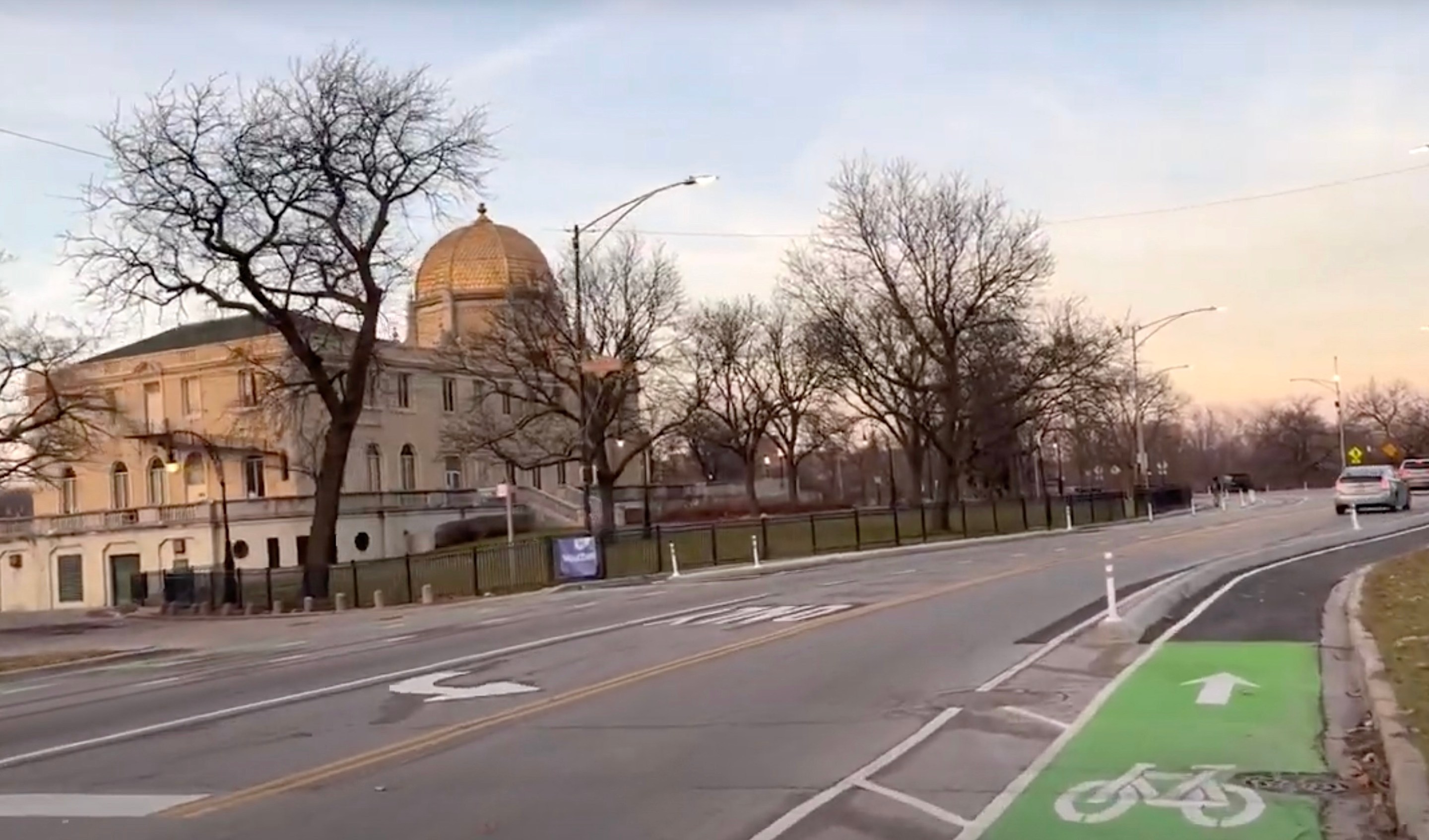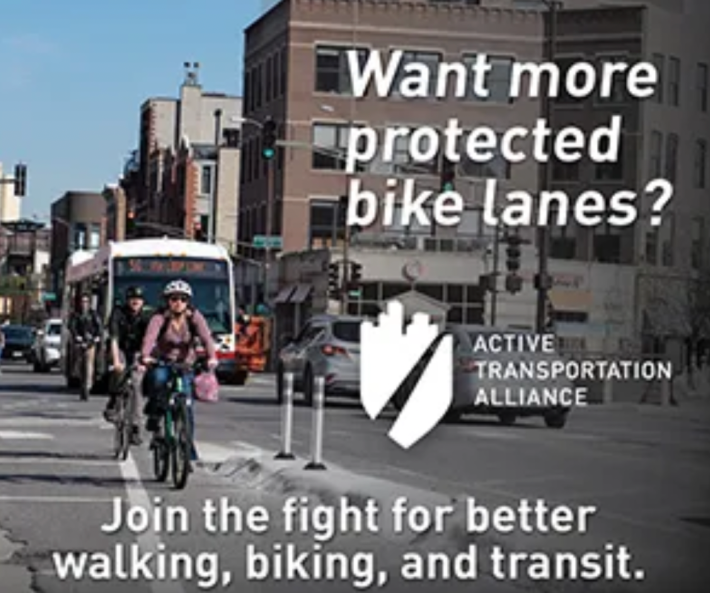
The Natural Resources Defense Council just released Act Locally, a resource document to help guide states to federal funding sources for infrastructure projects, and is asserting that there is nearly $3 trillion available, if you know where to look.
This road map "navigates the Bipartisan Infrastructure Law and the Inflation Reduction Act, and is intended primarily for local advocates and government officials. States are responsible for distributing most of the BIL and IRA money, and Act Locally can help them identify and take full advantage of these unprecedented funds. The document focuses on the transportation, buildings, and energy sectors, with the intention of addressing both inequity and climate change.
"We have a historic opportunity to build stronger, more resilient and equitable communities," said Shelly Poticha, managing director for regional impacts at NRDC. "Community leaders need to use all the tools they have so that we don’t repeat the failed policies of the past, which led to ever-wider highways, divided communities, and a continued reliance on dirty energy." Without knowledge, and taking action based on that info, the potential of these funds could be wasted.
There are five big categories of recommendations:
- Deliver substantial support to deepen local capacity
- Flex federal transportation funds to support safer driving and enhanced walking, biking, transit, and EV charging infrastructure
- Build out the benefits of vehicle electrification
- Maximize building decarbonization benefits, especially for lower-income communities and communities of color
- Invest in workforce training and supports
There are also five "deep dive" states, as case studies and guiding examples. Lucky for us Illinoisans, one of them is the Prairie State. The document has information on funding programs for investments in transportation, energy, and buildings for all fifty states. But for Colorado, Georgia, Illinois, North Carolina, and Pennsylvania you can also find past spending trends and descriptions of legal, planning, and equity structures. This information would be helpful if not necessary to strategically locate and deploy funding.
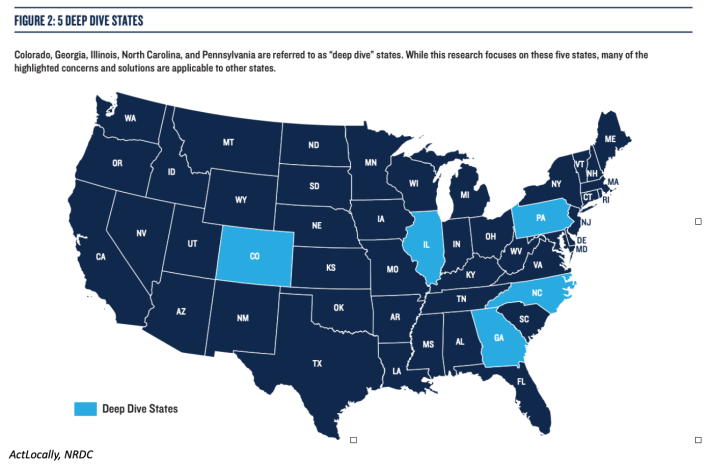
Although all are deeply important, we’ll focus Illinois and the second category: Flex federal transportation funds to support safer driving and enhanced walking, biking, transit, and EV charging infrastructure. Funds that have been historically used to build and maintain highways can now be "flexed" (redeployed) for things like public transportation, pedestrian infrastructure, bicycle infrastructure, EV infrastructure, and safety measures. The flex limit is 50 percent, so in Illinois there’s a potential $8.6 billion available. Between 2013 and 2020, only 2.9 percent of the allowable 50 percent has been reapportioned.
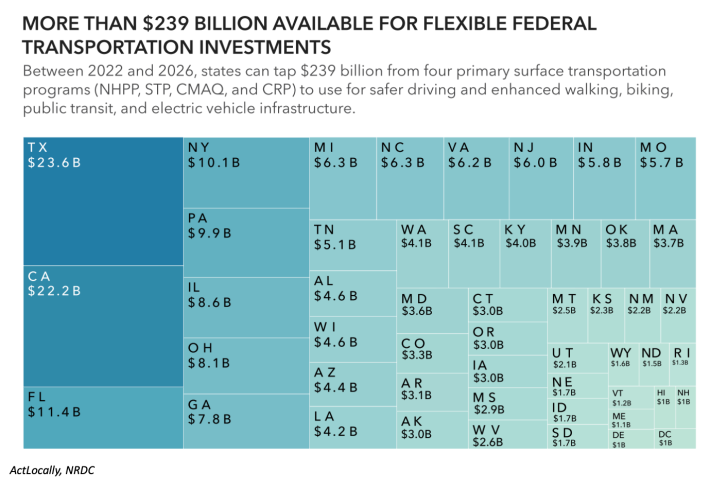
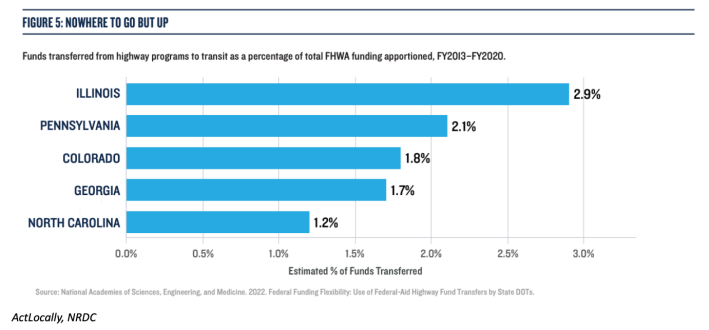
Helpfully, there are specific examples of exciting outcomes that are possible if funding is harnessed and deployed creatively. These strategies include flexing money from roads to transit, walking, biking, safety, and vehicle infrastructure. They also include increasing the building decarbonization budgets of state energy offices as much as tenfold. Other strategies are growing jobs related to transportation infrastructure and renewable energy (and especially for women, individuals with disabilities, and people of color). Another idea is redirecting funds from building highways to pay for new electric buses, new sidewalks, new bike lanes, and increased bus service.
The graphic below illustrates this last point. If Illinois redirected formula funds over five years, we could have 900 new electric buses. Or—not shown graphically but also possible through this same strategy—2,000 miles of new sidewalks, 7,510 miles of new bike lanes, or 3,420 additional hours of bus service per day for five years.
That seems impressive, but it’s hard to say what the real impact would actually be for Illinois, and for individual cities and towns. One billion dollars may sound like it would cover the cost of just about anything, but in 2022 the CTA estimated that it would take between $1.8 and $3.1 billion to replace its bus fleet with fully electric vehicles.


It’s clear why, to address inequity and climate change, the NRDC has chosen transportation as a key focus area. Reducing traffic violence is another motivation. Transportation infrastructure projects like road diets are vital to reducing serious and fatal injuries and improving conditions for people on foot and bikes. Act Locally highlights a number of traffic safety-related programs; for example, there is a potential $104.2M available in Illinois from the Highway Safety Improvement Program. That money could build a lot of curb extensions and protected bike lanes.

I like the philosophy behind the document and project: The answer, the antidote, to fixing past failed policies, is to listen to local leaders. Community-led solutions are necessary to fight climate change and improve the lives of real people living in said communities.
The publication's announcement on the NRDC's website says, "When local leaders engage with state decision makers around innovative deployment of these investments, the sky's the limit." The challenge here will be coordination, making real the potential of this directive. The bold plans outlined in Act Locally could achieve significant gains in the fight against climate change and the campaign for equitable transportation infrastructure.
And NRDC is really trying to make it easy to understand. There's a companion slide deck (18 infographic-heavy slides summarizing the full document's 36 pages) to simplify the process for government officials and advocates. Deciphering these new funding sources was at least half the battle. Let's hope these plans find their local champions and are brought to full potential.

Did you appreciate this post? Please consider making a tax-deductible donation to help Streetsblog Chicago keep publishing through 2025. Thank you.
